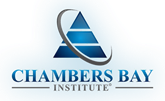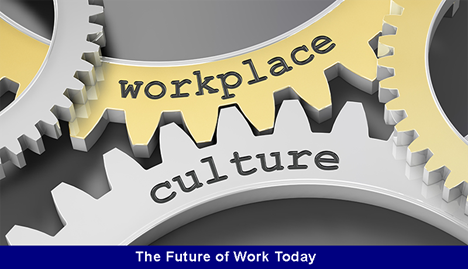The Future of Work Today
Returning to Tomorrow’s Workplace
by Jim Solomon and Bruce LaRue, Ph.D.
“Treat employees like they make a difference, and they will.”
The future of work continues to emerge daily as leaders address how the workspace will look for their organization today, while keeping an eye on how it must look in the future.
Whether your team never left the work site due to the nature of your work, has begun to return in some hybrid fashion, or is just making plans to return, leaders must recalibrate from the old paradigm of workplace centric to an employee centric focus.
Employee expectations, their needs, and their interests have rapidly been redefined because of the global pandemic. We have entered the age of the “great resignation” and the competition to attract, develop, and retain top talent must take priority as leader’s sharpen their strategies to achieve an edge in their industry or in many cases, as they refresh emerging as something new.
With this in mind, the role of leaders today is to ensure their team is cohesive, that it can collaborate across space, time, and organization boundaries to align behind mission priorities while requiring less direct supervision. To be successful at this, leaders must lead with empathy, regularly communicate, and develop adaptable teams.
Lead with Empathy
“Empathy is to understand and appreciate the needs for others” according to Gen Z leader Amy Herink. “It’s essential to leadership – builds bonds, gives, insight, teaches presence, guides understanding, sharpens people skills, and cultivates better communication.” Learning to see thru the collective lens of your team and each of its members is vital. Taking an employee centric approach, leaders truly get to know each person, and this must go beyond understanding their work or professional life. What are the other things of importance to them, what defines “family”, what are their outside interests and concerns? Where do they live and how is commute defined? What are their professional aspirations and what assistance do they need to achieve these?
Every life has a story, according to Chick-fil-A. It’s their tactic to training their team to approach each encounter with empathy. No different for leaders. Everyone wants to be understood, to be treated with dignity and respect, and to be honored as the person that they are.
Holly Weaver explains that “Leading with Empathy” is “putting people first. When crises takes a toll, it’s most critical for leaders to put their fingers on the pulse of their people’s energy and emotions, responding decisively, and perhaps more importantly, with genuine compassion. Commanding that self-awareness both allows leaders to demonstrate the behavior they want to see, and to provide a clear model for others to follow.”
Communications
Communications begins by listening. Before your team will hear you, they first want to be heard. Be as transparent as possible, providing each on your team with the insight that will help them to feel empowered, knowledgeable, and as comfortable as possible with the unknowns of the emerging workplace. According to Craig Groeschel, “Leaders who don’t listen to others will eventually be surrounded by people who have nothing to say.”
To help minimize anxiety with reentry to the workplace, a global logistics enterprise encouraged their leaders at all levels to engage regularly with their teams. They were to first understand the concerns and needs of the employees and then to share as much detail as they could about enterprise reentry plans and the reasoning behind them.
Using the following model, supervisors met with their teams on a few occasions to facilitate discussions. They set basic rules, with the first being that this was not to be a “gripe session”, but rather a constructive session to garner the following:
- What are the benefits of returning to the workplace?
- What are the challenges of returning to the workplace?
- What personal challenges do employees foresee with returning to work?
- And then, if they could ask the CEO a question about the return to work, what would that be?
Leaders assessed the responses connecting the dots between patterns, trends, and themes. This not only proved to be a beneficial way to gather insight from the employee’s perspective but created a comfortable way to get the employees to open-up and to share with each other reducing anxiety while preparing them for the change.
Adapt
VUCA (Volatility, Uncertainty, Complexity, and Ambiguity),” means that our previous notions of predictability and control no longer apply. As we have experienced, small changes in a VUCA world can generate effects that intensify in unpredictable ways over space and time. Increased ambiguity makes it difficult, if not impossible, to project future outcomes based on past trends. To thrive in a VUCA world, it is paramount for leaders to enhance their ability to adapt, while training their teams to be adaptable.
David Barno and Nora Bensahel have coined the term “adaption gap” in their new book Adaptation under Fire: How Militaries Change in Wartime to describe “the gap between the war that is predicted and the actual war that unfolds”. Leaders must consider how this may be applied to the private or non-profit sectors as well.
How we respond to change is ultimately a choice. We can see change as a threat to be avoided or a challenge to be overcome. We can choose to be a victim to our circumstance, or we can learn to leverage change to our advantage. The key is to never surrender our ability to choose how we respond to our situation. This is the essence of how humans adapt, develop, and evolve, and it is what distinguishes us from nearly every other creature on this planet.
Teams that learn to adapt, regularly are top producers. They attract others who want to be a part of that type of culture. They seek not only to self-develop but to learn from within to strengthen their team. Their retention rate is high, as best performers thrive in such an environment.
Integrator Leader Reflections
- Are you recognized as one who leads with empathy?
- Does your team feel informed, reducing anxiety and frustration?
- Do you leverage change to your advantage, and have you shown your team to do the same?


You must be logged in to post a comment.